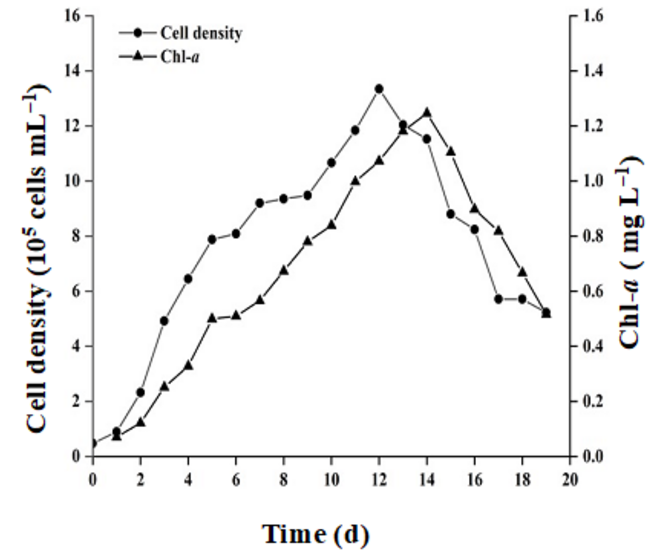Reviewed by Danielle Ellis, B.Sc.May 19 2023
Significant volumes of pesticides are used in present agricultural systems for specialized goals like weeding and insecticide, and most pesticides end up in the ocean. The harmful effects of pesticides on marine microbes remain unknown.
 The growth curves based on the cell density and Chl-a content were similar. Image Credit: Bo Chen.
The growth curves based on the cell density and Chl-a content were similar. Image Credit: Bo Chen.
Dr Zilian Zhang (Xiamen University’s College of Ocean and Earth Sciences) and Dr Meng Chen (Xiamen University’s College of Environment and Ecology) led a study that examined the toxic effects of three representative pesticides (chlorpyrifos, acetochlor, and dicofol) on the growth of the marine microbe microalga Skeletonema costatum.
They analyzed the microalgal cell density and chlorophyll-a content. The harmful effects of three commonly used pesticides on the marine microalga S. costatum differed, according to the research team.
Acetochlor had the most toxic effect of these pesticides, whereas chlorpyrifos had the least. Combined toxicity analysis suggests that the amount of acetochlor enhances the toxicity of dicofol and chlorpyrifos, while the toxicity of acetochlor and chlorpyrifos could be lowered by the presence of dicofol.

Image Credit: Chokniti-Studio/Shutterstock.com
During cultivation, marine microalgae destroyed the pesticides partially. Acetochlor had the longest half-life of the three insecticides under both individual and mixed conditions.
The current research sheds new light on the toxicity of three pesticides to marine microalgae, as well as evidence for the role of microalgae in pesticide removal from the environment. The molecular processes and mechanisms of pesticide breakdown by marine microalgae will be studied further.
Source:
Journal reference:
Zhang, Z., et al. (2023). Toxic effects of pesticides on the marine microalga Skeletonema costatum and their biological degradation. Science China Earth Sciences. doi.org/10.1007/s11430-022-1064-7.